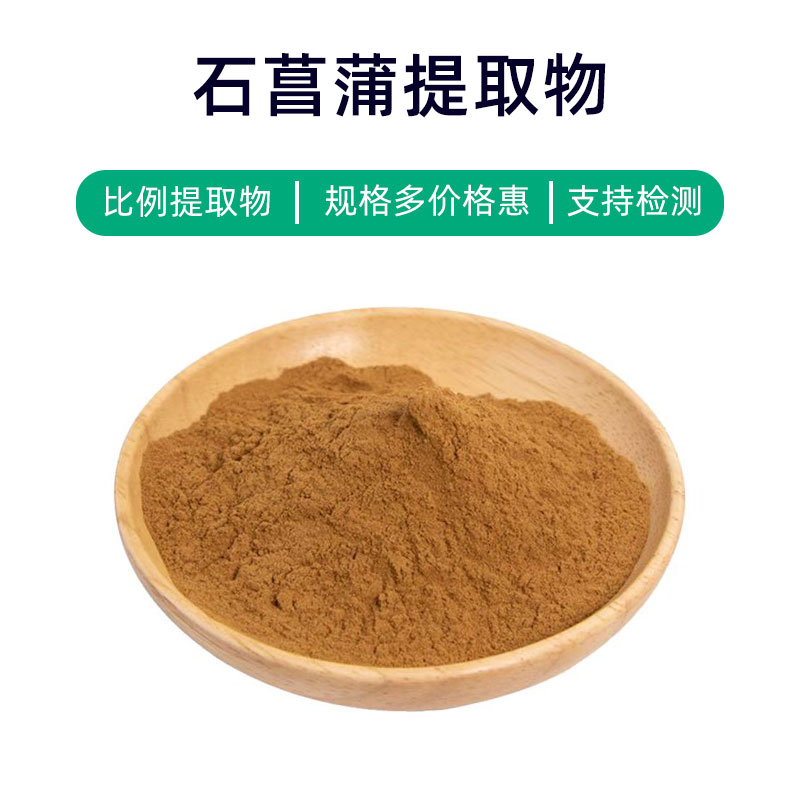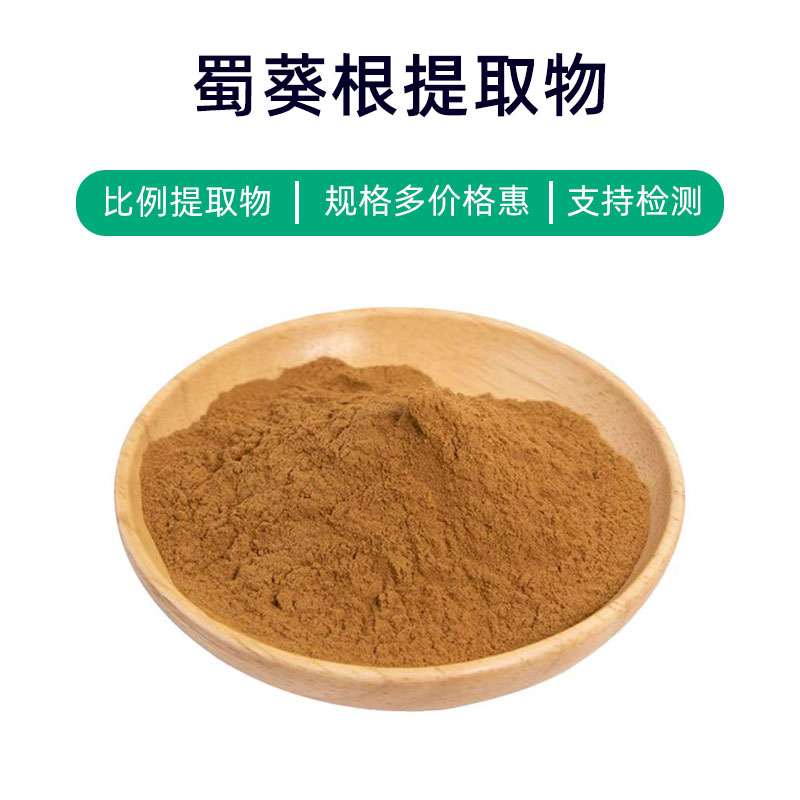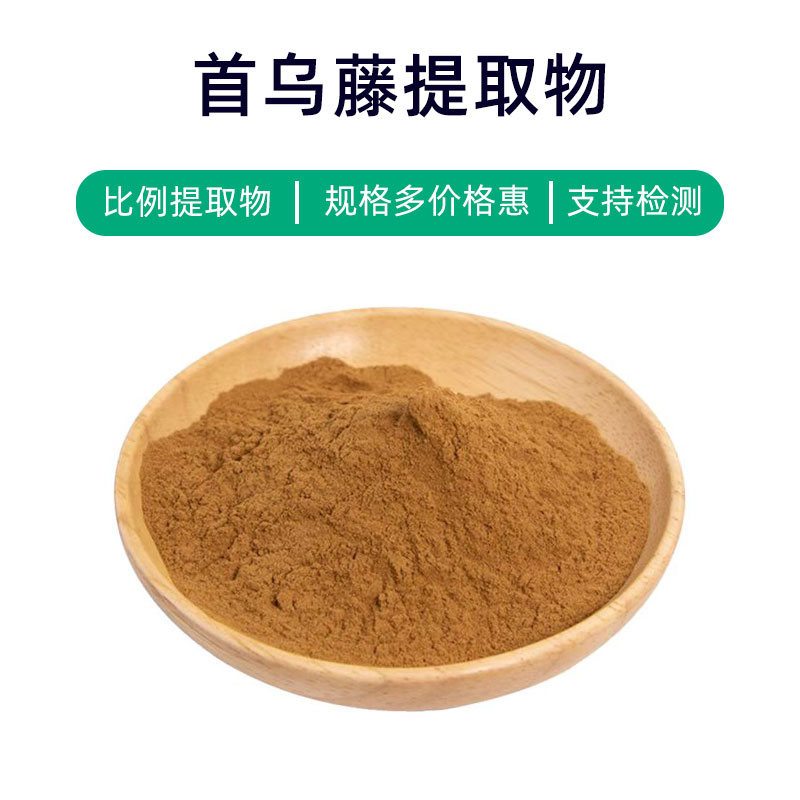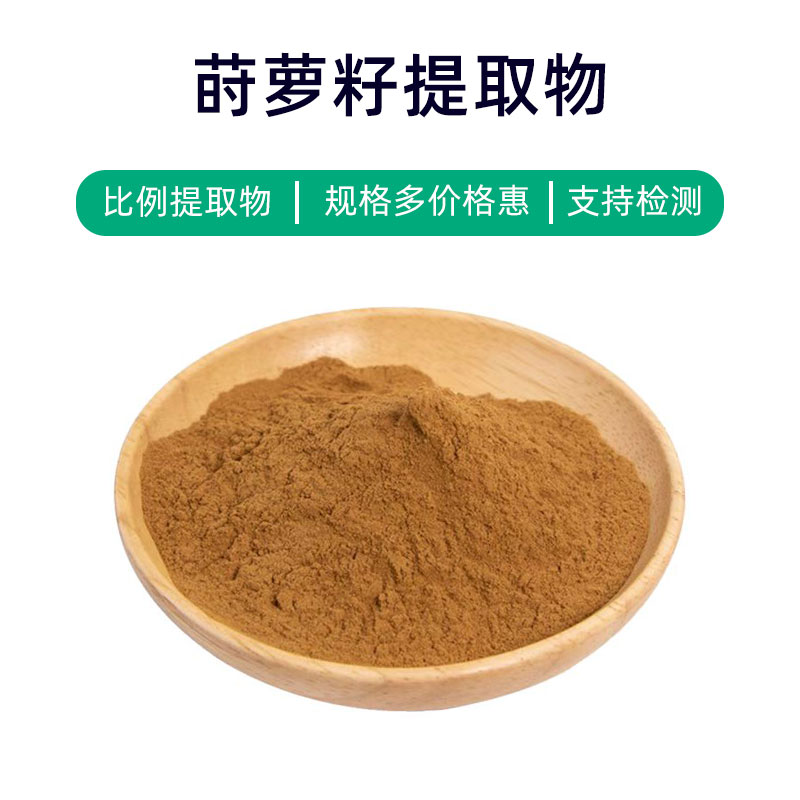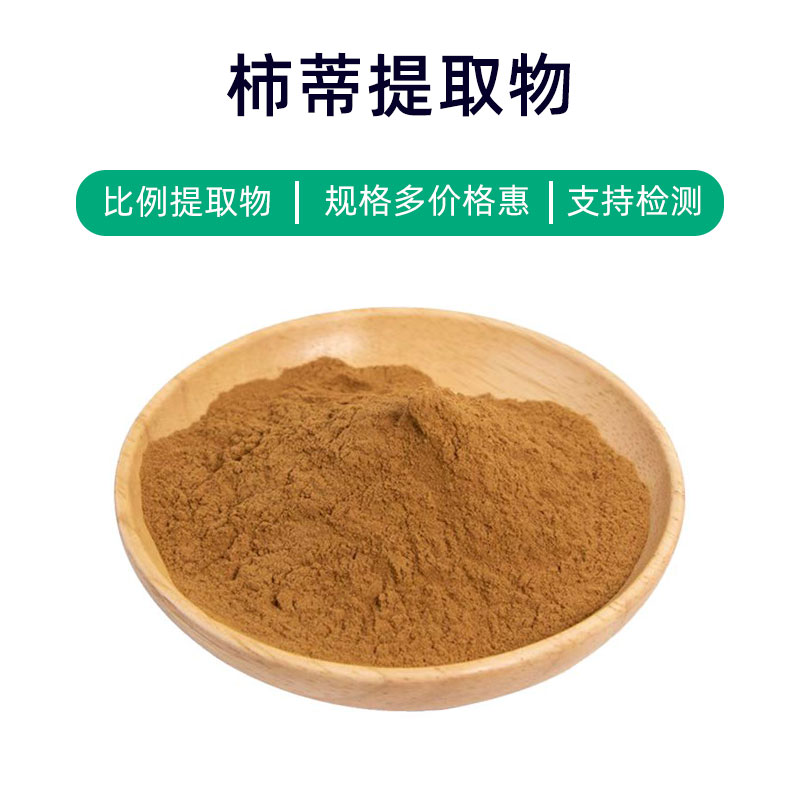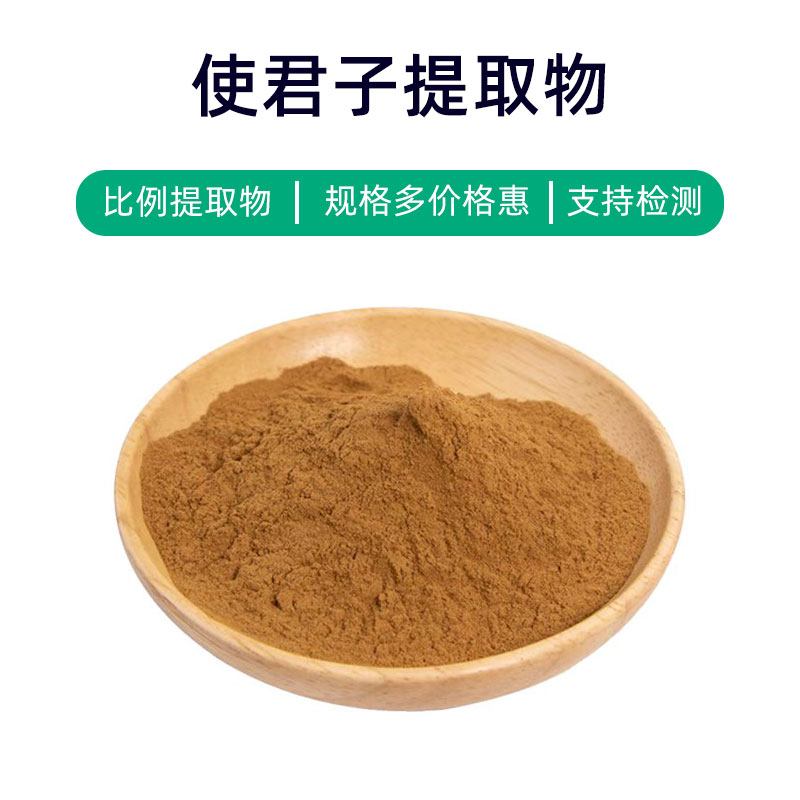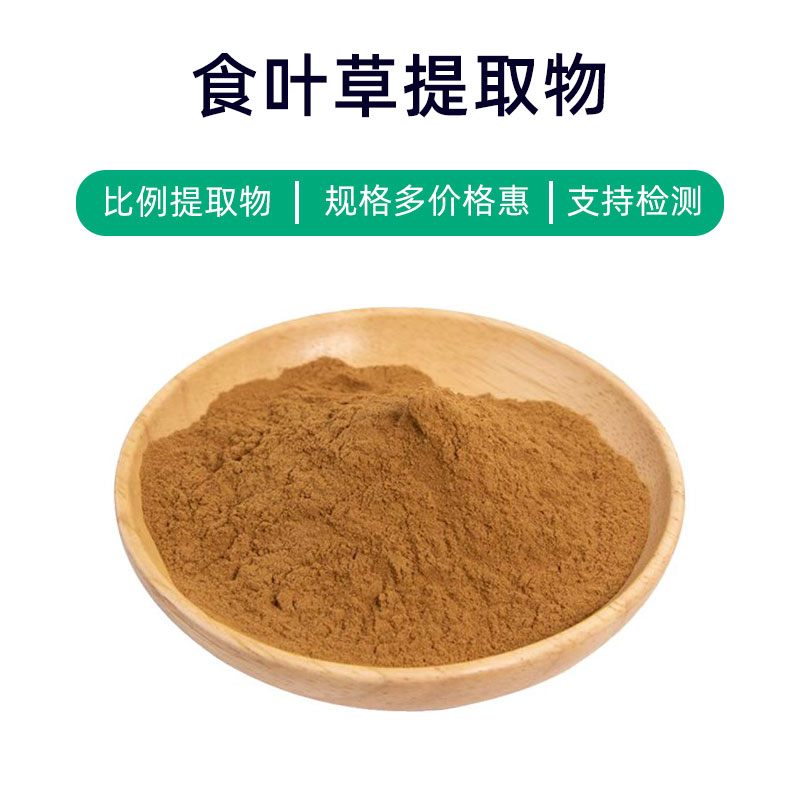Calamus Extract Product Introduction
Calamus Extract is a natural plant extract sourced from the rhizome of the Calamus (Acorus calamus) plant. Its main constituents include essential oils, flavonoids, and tannins, and it boasts various properties and applications.
First, Calamus Extract is known for its calming and soothing effects, helping to regulate mood and alleviate anxiety and tension.
Secondly, it exhibits antibacterial and anti-inflammatory properties, making it useful for treating oral inflammation, skin inflammation, and promoting wound healing and skin repair.
Additionally, Calamus Extract is stimulating and can enhance memory, helping to improve focus and concentration and boost productivity.
In terms of applications, Calamus Extract is extensively used in pharmaceuticals, dietary supplements, cosmetics, and food. In the pharmaceutical field, it can be formulated into oral liquids, ointments, and patches for treating anxiety disorders and oral inflammation. In dietary supplements, it is often included as an ingredient to bolster immune function and improve sleep quality. In cosmetics, it is used in skincare products for its skin-soothing and cleansing effects. In food, Calamus Extract serves as a natural flavoring agent and preservative, enhancing taste and maintaining freshness.
Overall, as a natural plant extract, Calamus Extract has diverse benefits and is recognized in the pharmaceutical, dietary supplement, cosmetics, and food industries.
Calamus Extract Production Process
The production process of Calamus Extract generally includes the following steps:
- Raw Material Preparation: Select fresh Calamus plants, clean the rhizomes, and remove surface dirt and impurities.
- Grinding: Crush and grind the cleaned rhizomes to enhance extraction efficiency.
- Extraction: Soak the ground rhizomes in suitable solvents for extraction, with common solvents including ethanol and water.
- Filtration: Filter the extract to separate solid particles from the solvent, yielding a clear extract.
- Concentration and Purification: Concentrate the extract using methods like evaporation or vacuum concentration to increase the concentration of useful components.
- Crystallization: In some cases, controlling temperature and solvent concentration can lead to crystallization of certain components, further enhancing purity.
- Drying: Dry the concentrated extract, commonly using spray drying or vacuum drying, to produce a powdered form of Calamus extract.
- Packaging and Storage: Finally, package the obtained Calamus Extract and store it in a dry, cool, and ventilated environment to maintain its stability and the efficiency of active components.
By following these steps, effective extraction and processing of Calamus Extract can yield a high-quality product for use in pharmaceuticals, dietary supplements, cosmetics, and food industries.
Calamus Extract Effects and Side Effects
Calamus Extract has multiple effects and benefits in the pharmaceutical and health fields, primarily including:
- Calming and Sedating: Contains essential oils that help soothe anxiety and tension, contributing to improved sleep quality.
- Anti-inflammatory and Antibacterial: Active ingredients provide strong antibacterial and anti-inflammatory effects, useful in treating oral inflammation and skin infections, facilitating wound healing.
- Invigorating and Stimulating: Certain stimulating compounds increase sensitivity to external stimuli, improving alertness and concentration.
- Digestive Health: It is believed to enhance digestion, stimulating gastrointestinal motility and appetite, aiding in alleviating digestive discomfort.
- Antioxidant Properties: Rich in flavonoids and natural antioxidants that combat free radicals, delay cell aging, and protect the body from oxidative damage.
- Immune Support: Exhibits immune-modulating properties, enhancing immunity and resistance to infections and diseases.
- Skin Soothing: Active components help alleviate inflammation and discomfort in the skin, beneficial in skincare applications.
While Calamus Extract has numerous benefits, attention should be paid to the following points:
- Overuse may lead to adverse reactions such as dizziness, nausea, and vomiting; thus, it should be used according to product guidelines or medical advice.
- Special populations, including pregnant women, nursing mothers, children, and the elderly, should use it under medical supervision to avoid unnecessary risks.
- Some individuals may experience allergic reactions, such as skin redness or itching; use should be discontinued and medical attention sought if discomfort occurs.
Overall, as a natural plant extract, Calamus Extract offers various benefits, but caution is warranted during use, following medical guidance to prevent adverse reactions.
Calamus Extract Usage Scenarios and Dosage
Calamus Extract finds diverse applications in pharmaceuticals, food, and cosmetics, with usage and dosage varying across different fields and products.
- Pharmaceutical Applications: Calamus Extract is commonly formulated into oral liquids, powders, and ointments for treating anxiety, insomnia, digestive issues, and oral inflammation. Dosage is determined based on the type of product and patient condition, typically following physician guidance.
- Food Applications: In food, Calamus Extract serves as a natural flavoring agent, often included in beverages, candies, and chewing gum to impart unique aromas and tastes. The dosage is generally in line with safety standards for food additives, complying with regulatory requirements.
- Cosmetic Applications: In cosmetics, Calamus Extract is used as a moisturizer, anti-inflammatory agent, and antioxidant, offering skin-soothing and quality-enhancing effects. It can be incorporated into creams, lotions, masks, and cleansers, with the dosage typically part of the product formulation and adjusted based on the specific recipe.
- Dietary Supplement Applications: As an ingredient in dietary supplements, Calamus Extract may be used in oral liquids, capsules, and tablets, providing benefits like enhanced alertness, improved sleep, and immune support. Dosage should follow product instructions or medical advice.
In summary, Calamus Extract holds significant value across various fields, but careful dosage control and adherence to relevant regulations and standards are crucial to ensure the product's safety and efficacy. Additionally, specific populations, such as pregnant women and children, should use it with caution and under physician guidance.
Calamus Plant Introduction, Distribution, and Growing Environment
Calamus (Scientific Name: Acorus tatarinowii Schott) is a perennial herbaceous plant belonging to the Araceae family, also known as sweet flag, marsh, or calamus. Below is a detailed introduction to the plant's sources, distribution, and growing environment.
- Source Plant: Calamus is an aquatic plant characterized by linear stems and thick rhizomes, commonly found in ponds, streams, lake edges, and wetland areas. Its leaves are sword-shaped and green, sometimes showing longitudinal stripes. The flowering period is in summer, with umbrella-shaped flower clusters that are yellow-green and emit a fragrant aroma.
- Distribution: Calamus primarily occurs in northeast, north-central, and southeastern China, especially in areas densely populated with water, such as the Yangtze River and Pearl River basins. It can also be found in other parts of Asia, including Japan, the Korean Peninsula, and Russia.
- Growing Environment: Calamus thrives in humid environments and has significant water requirements. It typically grows along streams, lakeshores, and in wetlands at altitudes of 500-1500 meters. While it prefers ample sunlight, it can adapt to partially shaded environments. It is not picky about soil conditions but favors fertile, moist, silty, or sandy soils. Its reproduction occurs mainly through rhizomes and seeds, with rhizomes growing rapidly to cover the bottom of waterways.
In conclusion, Calamus is an aquatic plant primarily found in wetlands and water environments of China and other Asian regions. It has strong adaptability, enabling growth in various humid environments while offering medicinal and ornamental value.
Calamus Extract Processing and Storage
The processing of Calamus Extract generally includes the following steps: First, the collected Calamus is washed and processed to remove impurities and outer skin. Next, the plant undergoes grinding and crushing to extract effective components. Subsequently, suitable extraction methods (such as soaking or supercritical fluid extraction) are employed to extract active components from the Calamus. Finally, through filtration, concentration, and drying processes, the final product of Calamus Extract is obtained.
For storage, it is important to note the following: First, the extract should be stored in a cool, dry, and ventilated area, avoiding direct sunlight and humid environments to prevent mold and spoilage. Secondly, the extract must be stored in sealed containers to prevent exposure to oxygen and moisture. Lastly, ensure the extract does not come into contact with toxic or harmful substances during storage to maintain its purity and quality.
Monica Sun is a seasoned expert in the plant extraction industry with over a decade of experience in research and production. She specializes in the extraction and purification of plant active ingredients, focusing on driving innovation in natural product applications. Monica has participated in the development of multiple functional plant extracts, delivering high-value natural raw material solutions for the health food, pharmaceutical, and dietary supplement sectors.

